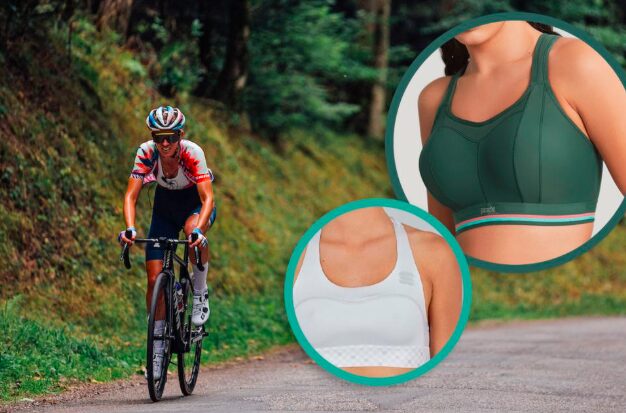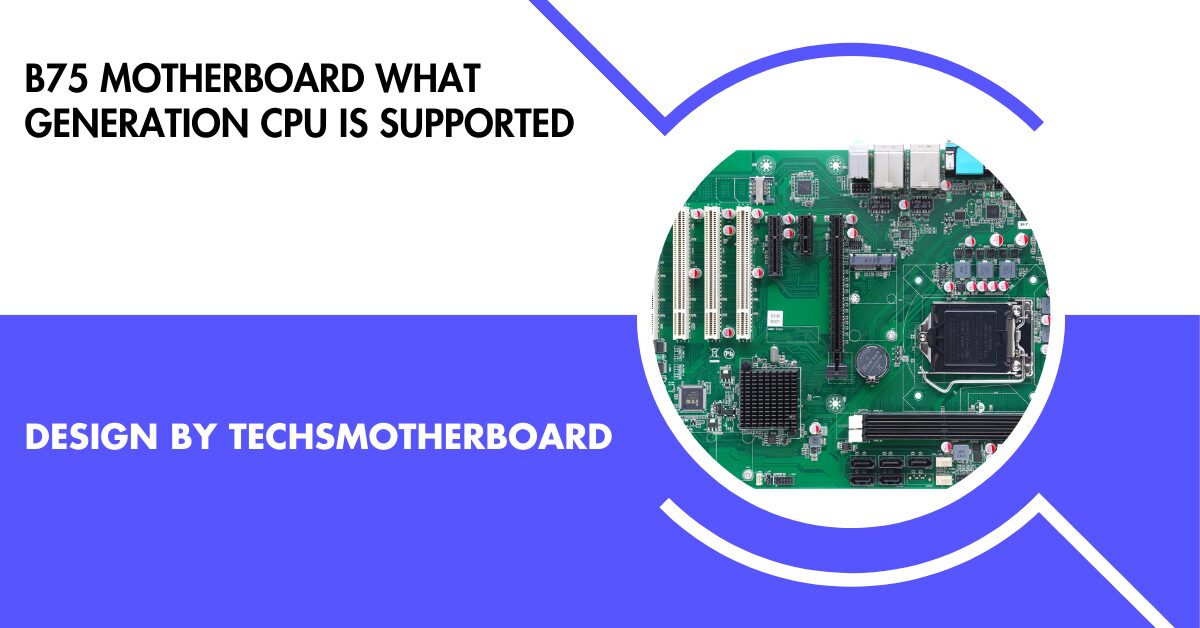Lifestyle
Larry Manetti – A Look at His Life, Career, and Legacy!

Larry Manetti is a well-known American actor, best recognized for his role as Orville “Rick” Wright on the hit 1980s television series Magnum, P.I.. With a career spanning over five decades, Manetti has left a lasting impact on Hollywood, particularly in the crime and action TV genre.
In this article, we will explore Larry Manetti’s early life, acting career, notable roles, personal life, and lasting influence on the entertainment industry.
Who is Larry Manetti?

Larry Manetti (born July 23, 1947) is an American actor, author, and producer. He is best known for playing Rick Wright, the charming and stylish club owner, in Magnum, P.I. alongside Tom Selleck. His career has been marked by a variety of roles in crime dramas, action series, and classic television shows.
Besides acting, Manetti is also an author and has written a memoir about his experiences in Hollywood, offering behind-the-scenes stories about his time on Magnum, P.I. and his interactions with Hollywood legends.
Larry Manetti’s Early Life and Background
Larry Manetti was born in Chicago, Illinois, on July 23, 1947. He developed an interest in acting early in life and pursued training at the Ted Liss Acting School, which helped him build a strong foundation for his career in Hollywood.
His passion for acting led him to audition for roles in television, and soon, he made his way into some of the most iconic TV shows of the 1970s and 1980s.
Larry Manetti’s Acting Career
1. Breakthrough Role in Baa Baa Black Sheep (1976-1978)
Larry Manetti’s first major television role was in the war drama Baa Baa Black Sheep (later renamed Black Sheep Squadron). He played Lieutenant Robert “Bobby” Boyle, a fighter pilot in World War II. This show introduced him to a wide audience and helped him gain recognition in Hollywood.
2. Iconic Role in Magnum, P.I. (1980-1988)
Manetti’s most famous role came in 1980 when he was cast as Rick Wright in Magnum, P.I.. His character was a former Marine who ran the King Kamehameha Club in Hawaii and was a close friend of Thomas Magnum (played by Tom Selleck).
His portrayal of Rick Wright made him a fan favorite, and his chemistry with the cast, including John Hillerman (Higgins) and Roger E. Mosley (T.C.), was a key factor in the show’s success.
Why Was Magnum, P.I. So Popular?
- It had action-packed storytelling combined with humor.
- The Hawaiian setting added a unique, tropical backdrop.
- The friendship between Magnum, Rick, and T.C. gave the show heart.
- Larry Manetti’s stylish, smooth-talking character added charm and humor.
3. Guest Appearances in Popular TV Shows
After Magnum, P.I., Larry Manetti continued to make guest appearances in some of the most popular TV shows, including:
- Walker, Texas Ranger
- JAG
- Quantum Leap
- Renegade
- Hawaii Five-0 (2013 Reboot)
- Blue Bloods (2023) – where he reunited with Tom Selleck
His versatility allowed him to play different roles in action, drama, and crime series.
Larry Manetti’s Book: Aloha Magnum
In addition to acting, Manetti is an author. He wrote the book Aloha Magnum, which gives fans a behind-the-scenes look at his time on Magnum, P.I.. The book includes:
- Personal stories about his co-stars, including Tom Selleck.
- Insights into Hollywood life during the 1980s.
- Funny and heartfelt moments from his career.
Fans of Magnum, P.I. and classic TV will enjoy reading this book for an inside perspective on one of the most beloved shows of the 1980s.
Larry Manetti’s Personal Life
Larry Manetti has been married to Nancy Manetti for many years, and the couple has a son, Lorenzo Manetti. Despite his long career in Hollywood, he has maintained a relatively private and low-key personal life.
He is also known for his love of food and has even hosted a radio show about cooking and Italian cuisine.
Larry Manetti’s Net Worth and Legacy
With a long career in television, acting, and writing, Larry Manetti has an estimated net worth of $5 million. His contributions to classic TV, particularly in crime dramas and action series, have cemented his legacy as a beloved actor.
Also Read: What Does Inquire Mean On Instagram – A Complete Guide!
Legacy Highlights
✔ Best known for Magnum, P.I. and his role as Rick Wright.
✔ Over 50 years in the entertainment industry.
✔ Still active in Hollywood, making guest appearances.
✔ His book Aloha Magnum remains a fan favorite.
FAQs About Larry Manetti
1. What is Larry Manetti best known for?
Larry Manetti is best known for playing Rick Wright in the 1980s hit series Magnum, P.I..
2. Did Larry Manetti and Tom Selleck remain friends?
Yes! Larry Manetti and Tom Selleck have remained good friends over the years and even reunited on Blue Bloods in 2023.
3. What other TV shows has Larry Manetti appeared in?
Besides Magnum, P.I., Manetti has appeared in Baa Baa Black Sheep, JAG, Hawaii Five-0, Blue Bloods, Renegade, and Walker, Texas Ranger.
4. Does Larry Manetti have a book?
Yes! He wrote Aloha Magnum, which shares behind-the-scenes stories from his acting career.
5. Is Larry Manetti still acting?
Yes! He continues to make guest appearances on TV shows, most recently on Blue Bloods in 2023.
Final Thoughts on Larry Manetti
Larry Manetti is a Hollywood veteran, best remembered for his role as Rick Wright in Magnum, P.I.. His charisma, humor, and acting talent have made him a favorite among fans of classic TV shows. Even decades after Magnum, P.I., he continues to make appearances in TV shows, keeping his legacy alive. Whether you’re a longtime fan or just discovering his work, Larry Manetti’s contributions to television will always be celebrated.
Lifestyle
A Greener Home for a Happier You

Living in harmony with the environment can transform your home into a sanctuary of well-being and sustainability. By incorporating greenery and eco-friendly practices into your daily life, you not only reduce your carbon footprint but also create a positive space that promotes physical and mental wellness. Here’s how you can benefit from a greener home and the steps to achieve it.
The Benefits of a Green Home
Enhanced Air Quality
One of the immediate advantages of adding plants to your home is improved air quality. Certain plants, such as peace lilies or snake plants, naturally cleanse the air by absorbing toxins and emitting oxygen. Cleaner air can reduce allergy symptoms, boost concentration, and improve overall health.
Reduced Stress and Increased Happiness
Research shows that being surrounded by greenery can lower stress levels, enhance mood, and foster relaxation. Adding plants to your living spaces creates a connection to nature, which can have a calming effect that improves mental well-being.
Energy Efficiency and Cost Savings
Adopting sustainable practices can also positively impact your utility bills. For instance, installing energy-efficient windows and LED lighting reduces energy consumption. Incorporating greenery strategically, such as shade-providing trees around your property, can cool your home naturally, reducing the need for air conditioning.
Positive Environmental Impact
A green home is a step toward reducing waste and conserving natural resources. From composting kitchen scraps to recycling household waste, small changes accumulate into significant environmental benefits. Sustainable living nurtures not only your immediate surroundings but also contributes to the planet’s health.
How to Transform Your Home
Bring Nature Indoors
Start by adding houseplants to various rooms. Whether it’s succulents for low-maintenance care or larger plants like fiddle-leaf figs, choose greenery that aligns with your lifestyle and environment. Arrange them stylishly in living areas, bedrooms, and even bathrooms to create a fresh and inviting appearance.
Sustainable Building Materials
If you’re renovating or building a home, opt for eco-friendly materials. Bamboo flooring, reclaimed wood, and non-toxic paints are excellent choices that minimize environmental impact while adding a contemporary aesthetic to your space.
Maximize Natural Light
Design your interior to take advantage of sunlight. Not only does this reduce energy use by lowering your reliance on artificial lights, but it also enhances your mood. Consider placing mirrors strategically to reflect sunlight into darker corners of your home for a natural, bright environment.
Create an Outdoor Sanctuary
Your outdoor space is a vital extension of your home. Whether you have a small balcony or a sprawling yard, focus on incorporating eco-friendly landscaping techniques. Utilize native plants that thrive in your region’s climate and require less water, or plant a garden that supplies fresh produce year-round. If you live in Utah, leveraging the native landscape in Park City will give you a lush yet sustainable yard suited to the local environment.
Conserving Resources
Small habits can lead to significant changes. Install water-saving fixtures, such as low-flow showerheads, to reduce water waste. Set up a rainwater collection system to irrigate your outdoor plants responsibly. Additionally, using smart thermostats or energy-efficient appliances can help lower both your bills and energy consumption.
Composting and Recycling
Turn your kitchen scraps, like fruit peels and vegetable waste, into compost for a nourishing garden supplement. Set up a simple recycling system to ensure materials like paper, glass, and plastics are properly sorted and repurposed.
The Role of Technology in Sustainable Homes
Modern technology offers incredible opportunities for creating eco-friendly homes. Smart home systems allow you to monitor and automate energy use, ensuring that lights and devices are only operational when needed. Solar panels are another game-changer, offering renewable energy options to power your household efficiently.
Tips for Maintaining a Green Home
- Regular Care for Plants: Make sure your indoor plants are adequately watered and dust-free to ensure they remain healthy and vibrant.
- Declutter Mindfully: When removing items, consider donating or repurposing them. This minimizes landfill waste and gives your belongings a second life.
- Stay Educated: Learn and adapt to new practices that align with environmental awareness. Whether it’s finding better waste management methods or upgrading to newer energy-efficient equipment, staying informed is key.
Conclusion
Creating a greener home is not just about contributing to environmental causes; it’s about building a space that fosters happiness, health, and connection. The positive changes, from improved air quality to stress reduction, add a sense of fulfillment to your everyday life. Start with small steps, and over time, you’ll find that sustainable living becomes second nature. A greener home indeed results in a happier and healthier you.
Lifestyle
Everything You Need to Know About Sports Bras and Bras

Choosing the right bra can often feel overwhelming, especially with so many styles and functions available. Among the most common choices women make today is between a traditional bra and a sports bra. While they may serve similar purposes—supporting the bust and providing comfort—their design, fit, and intended use are quite different. Understanding the purpose of each can help you make better decisions for your daily routine, workouts, and overall comfort.
What Is a Traditional Bra?
A traditional bra is designed primarily for everyday wear. It comes in many styles such as push-up, balconette, plunge, strapless, and full coverage. Most regular bras are structured with underwires, molded cups, and adjustable straps to provide lift, shape, and definition. They are made to enhance your silhouette and work well under most types of clothing.
Bras are typically selected based on size, outfit, and occasion. Some offer minimal coverage for low-cut tops, while others provide full coverage for modest dressing. Traditional bras also come in a variety of materials, from cotton for casual comfort to lace and satin for a more elegant touch.
What Is a Sports Bra?
A sports bra, on the other hand, is designed with one main purpose: to reduce breast movement during physical activity. These bras provide firm support and compression, making them ideal for exercise, Yoga Activewear for Women, running, or any type of movement-intensive activity. Unlike traditional bras, sports bras are made from stretchy, breathable materials like spandex, polyester, and moisture-wicking fabric that keeps sweat away from the skin.
Sports bras often come in three levels of impact support: low, medium, and high. Low-impact bras are suitable for walking or light yoga, while high-impact bras are built to support activities like running, jumping, or intense cardio. The goal is to keep the chest stable, preventing pain or discomfort caused by excessive bounce.
Key Differences Between Bras and Sports Bras
Although both serve the purpose of supporting the bust, the construction and function of each type differ significantly.
- Support Type: Bras lift and shape the bust, while sports bras compress or encapsulate for movement control.
- Comfort Level: Sports bras are generally more comfortable for long periods, as they’re designed without underwires and with wider straps.
- Fabric: Sports bras use sweat-wicking, elastic materials. Regular bras are often made of cotton, lace, mesh, or silk.
- Design and Structure: Traditional bras focus on aesthetics and shaping. Sports bras focus on functionality and minimizing movement.
When to Wear a Traditional Bra
Traditional bras are best suited for day-to-day activities, formal events, work settings, or occasions when you want your outfit to look structured. A properly fitted bra helps in creating a flattering silhouette under clothes and provides a polished look. If you’re wearing tailored tops, blouses, or dresses, a well-structured bra can make a big difference in how your clothes fit.
They are also ideal when you want to enhance your natural shape. Bras with padding or push-up designs can offer more volume, while full coverage options give maximum support with a natural look.
When to Wear a Sports Bra
Sports bras are essential when engaging in any physical activity. They reduce strain on breast ligaments and prevent long-term damage to breast tissue. But their use isn’t limited to exercise alone. Many women now prefer sports bras for their everyday comfort. Whether you’re working from home, running errands, or relaxing, a well-fitted sports bra offers a wire-free, no-fuss experience.
They are also excellent choices for young girls just beginning to wear bras, pregnant women looking for soft support, or anyone recovering from surgery or experiencing sensitivity.
Pros and Cons
Traditional Bras
Pros:
- Variety of styles and shapes
- Suitable for different outfit types
- Enhances appearance and posture
Cons:
- Can be uncomfortable if ill-fitted
- Underwires may cause discomfort
- May require more maintenance (hand-washing)
Sports Bras
Pros:
- Superior support during physical activity
- Comfortable and breathable
- Easy to wear for long durations
Cons:
- Less variety in aesthetic appeal
- May flatten the chest (depending on style)
- Not always suitable for formal or fitted outfits
How to Choose the Right One
When it comes to choosing between a sports bra and a traditional bra, the decision really depends on your daily needs and activities. If you’re dressing up for a day at the office or an event, a traditional bra may offer the style and shape you’re looking for. But if comfort is your top priority or you’re planning to be active, a sports bra is likely the better choice.
It’s also wise to have both in your wardrobe. Some days you’ll want the confidence and lift of a traditional bra, while on other days you’ll crave the soft hold and comfort of a supportive sports bra. Try different brands and materials to see which suits your lifestyle best.
Final Thoughts
Understanding the purpose and function of both sports bras and traditional bras is key to making the right choice for your body and lifestyle. Bras offer lift, shape, and style, making them ideal for formal and structured wear. Sports bras, on the other hand, are built for support and comfort, especially during physical movement.
The right choice doesn’t always have to be either-or. Most women benefit from having a mix of both types in their wardrobe. By paying attention to your activities, comfort needs, and clothing style, you’ll know exactly which one to reach for—and when.
Lifestyle
Effective Anti-Aging Treatments and Skincare Strategies for Maintaining Youthful Skin

Aging is a natural part of life, and our skin often tells the story first. From the moment we’re born, our skin is constantly evolving—responding to the environment, our habits, and the passage of time. While fine lines and a loss of elasticity are inevitable, the way we care for our skin can significantly influence the aging process. Today’s skincare and wellness knowledge has moved far beyond surface-level beauty, revealing just how closely our daily routines, genetics, and lifestyles interact to shape the health and appearance of our skin.
Understanding the science behind skin aging is the first step toward making informed decisions about skincare. With the proper knowledge and tools, it’s possible to not only slow the visible signs of aging but also to restore radiance, firmness, and resilience. Whether you’re beginning to notice subtle changes or seeking ways to enhance your current regimen, this guide will provide you with essential insights, key ingredients, and practical strategies to support youthful, glowing skin at every stage of life.
The Science Behind Skin Aging
The skin is an incredibly dynamic organ that reflects what is happening both internally and externally throughout your life. Signs of aging, such as fine lines, wrinkles, sagging, and loss of radiance, gradually become more noticeable due to the cumulative effects of time, environmental exposure, and personal habits. A significant part of skin aging involves intrinsic factors—elements such as your genetics, natural hormone levels, and cellular processes that are beyond your direct control. As you age, your skin produces less collagen and elastin, key proteins that keep it firm and supple.
However, just as impactful are extrinsic elements that can speed up visible aging. Sun exposure is widely recognized as the leading cause of premature wrinkles, pigmentation, and even skin cancer, a process known medically as photoaging. According to clinical studies on skin aging, other key influences include pollution, smoking, chronic stress, and dietary choices. By understanding these two pillars of skin aging, it becomes clear that both science and daily routine play vital roles in investing in our skin’s long-term health.
If you’re exploring comprehensive anti-aging treatments and skincare methods, embracing a multi-faceted approach yields the best results. Modern advances—ranging from over-the-counter serums to in-office medical aesthetics procedures—target the mechanisms behind aging, empowering people to address concerns before they become deeply set. With consistent care, improvements in texture, tone, and resilience become visible, leading not only to younger-looking skin but also to greater self-confidence.
Key Ingredients in Anti-Aging Skincare
- Retinoids: These scientifically proven vitamin A derivatives are powerhouse ingredients known to accelerate skin cell turnover, smooth irregular texture, and promote the fading of fine lines and dark spots. Over weeks to months, retinoids can visibly rejuvenate the complexion and restore glow.
- Vitamin C: This potent antioxidant protects skin cells from free radical damage caused by sun and pollution exposure. Long-term use of vitamin C serums is associated with improvements in skin brightness, a reduction in hyperpigmentation, and overall evenness of skin tone.
- Peptides: These short chains of amino acids communicate with cells to trigger collagen and elastin synthesis. By supporting the extracellular matrix, peptides make skin appear more lifted, bouncier, and revitalized.
- Hyaluronic Acid: A naturally occurring sugar molecule, hyaluronic acid can hold up to 1,000 times its weight in water, making it an excellent hydrator. Skin treated with hyaluronic acid feels immediately smoother and more moisturized, helping fine lines look less pronounced.
Clinical studies underscore the effectiveness of these ingredients when used as part of a daily routine, but patience is key. Results often build gradually over several weeks or months. By starting slowly, especially with potent actives like retinoids and vitamin C, users can avoid irritation while skin acclimates, eventually reaping the benefits of robust, evidence-based formulations.
Building Daily Skincare Habits
A thorough but manageable skincare routine is essential for unlocking youthfulness. Start each morning with a gentle cleanser to eliminate oils and sweat accumulated overnight. Follow up with a targeted antioxidant serum containing vitamin C or niacinamide, which helps protect skin throughout the day. Moisturizer helps maintain the skin’s barrier function, a critical component in preventing dehydration and environmental damage.
Evening routines are the perfect opportunity to unwind and relax. After cleansing, gently exfoliate a few times a week to increase cell turnover. Next, apply targeted treatments—such as retinoids or peptide serums—that stimulate skin renewal. Finally, top things off with a nourishing night cream to lock in hydration and support overnight recovery processes. Sticking to these habits day after day is one of the most effective ways to preserve youthfulness, prevent further damage, and maximize the benefits of all other anti-aging interventions.
Lifestyle Choices That Support Youthful Skin
While creams and serums are powerful, actual skin vitality extends far beyond the product shelf. Regular, restful sleep enables the body to carry out vital repair and renewal, reducing the dullness and puffiness sometimes associated with poor rest. Daily movement—whether through structured exercise or brisk walks—boosts blood flow and brings fresh nutrients to the skin, imparting a natural, healthy glow.
Stress and emotions also play a complex role. Chronic stress can trigger an increase in cortisol, the so-called “stress hormone,” which is associated with inflammation and impaired skin repair processes. Managing stress through mindfulness, meditation, or engaging in simple leisure activities may help limit some of the wear and tear associated with aging. Nutrition completes the circle: antioxidant-rich fruits and vegetables, whole grains, and healthy fats provide the building blocks cells need to thrive. Limiting excess alcohol and eliminating tobacco further protects the skin against premature dullness, damage, and wrinkling.
Advanced Non-Invasive Treatments
When over-the-counter approaches don’t offer the results you crave, non-invasive and minimally invasive treatments become the next frontier. Chemical peels use gentle acids to slough away dead skin layers, revealing brighter, healthier skin with fewer imperfections. Microneedling, which creates thousands of controlled micro-injuries, activates the body’s wound-healing mechanisms to build new collagen and elastin, diminishing wrinkles and scars with minimal downtime.
Other sophisticated options include light-based technologies, such as IPL (intense pulsed light) or lasers, which can fade discoloration, target broken capillaries, and improve overall skin texture. Customizing these treatments to your unique skin type and concerns maximizes benefits. Consulting a certified professional is crucial; they’ll help determine the most appropriate therapies and guide you on aftercare to avoid unnecessary irritation or risks. These advances enable people to tackle more stubborn signs of aging, often in a safe, comfortable setting.
When to Start Anti-Aging Treatments
The best anti-aging routines emphasize both prevention and correction. Dermatologists now encourage protection from ultraviolet rays starting as early as childhood and the adoption of proactive skincare routines in the late teens or early twenties. Antioxidant serums and consistent sun protection provide a strong defense against many early signs of aging. By the time your 30s and 40s roll around, retinoids and professionally administered treatments can address gradual changes, while still preserving your skin’s unique qualities. According to U.S. News & World Report, a growing range of cosmetic procedures—from injectables to laser treatments—can also complement your skincare regimen, offering targeted solutions to fine lines, uneven tone, and volume loss. The sooner you introduce age-appropriate habits, the more control you will have over visible changes as the years pass.
Debunking Common Myths
- Myth: Only expensive skincare products deliver real results.
- Fact: Clinical studies continually support that active ingredients make a greater difference than price or packaging. High-quality retinoids, peptides, and antioxidants can be found at various price points, with many pharmacies and drugstores offering dermatologist-approved options.
- Myth: If something is natural, it must be gentle and safe.
- Fact: Certain natural substances—including some essential oils or herbal extracts—can actually trigger allergic reactions or exacerbate sensitive conditions. Patch testing and evidence-based choices can help avoid unexpected flare-ups.
- Myth: Once you have sun spots or wrinkles, nothing can improve them.
- Fact: While prevention remains the most effective strategy, many targeted ingredients and in-office treatments can noticeably soften or fade early signs of damage. Consistency and realistic expectations are essential.
Long-Term Strategies for Aging Gracefully
Maintaining youthful skin over the years is truly a marathon, not a sprint. Thoughtful adaptation enables you to adjust your routine in response to changing lifestyle factors, seasonal variations, and the natural progression of aging. Staying in regular contact with skin health professionals provides expert insights and timely interventions as your goals shift. Most importantly, approach skincare as a celebration of self-care and wellness, not just an attempt to turn back the clock.
True beauty shines when you blend cutting-edge treatments and time-tested habits with self-kindness and positivity. Confidence grows from knowing you are doing what’s best for your health and happiness. With deliberate, conscious care and an openness to new evidence and possibilities, you can achieve graceful, vibrant skin throughout every decade of life.
-

 Tech5 months ago
Tech5 months agoSotwe STW Explained How a Radical Platform is Redefining Online Expression
-

 Entertainment7 months ago
Entertainment7 months agoHow Do I Turn On the Beatbot?
-

 Motherboard Guide1 year ago
Motherboard Guide1 year agoAre B750 Motherboard A Good Choice – A Complete Overview!
-

 Blog1 year ago
Blog1 year agoHow To Find My Motherboard Model And Bios Version – A Detailed Overview!
-

 Motherboard Guide1 year ago
Motherboard Guide1 year agoAre Gigabyte Motherboards Good – A Comprehensive Review!
-

 Blog3 months ago
Blog3 months agoHer Love Is A Kind Of Charity Password – The Hidden Meaning Behind the Phrase!
-

 Motherboard Guide11 months ago
Motherboard Guide11 months agoB75 Motherboard What Generation Cpu Is Supported – B75 Motherboard Cpu Support!
-

 Entertainment8 months ago
Entertainment8 months agoFire Kirin Xyz Login – A Complete Guide to Accessing and Playing Online!

